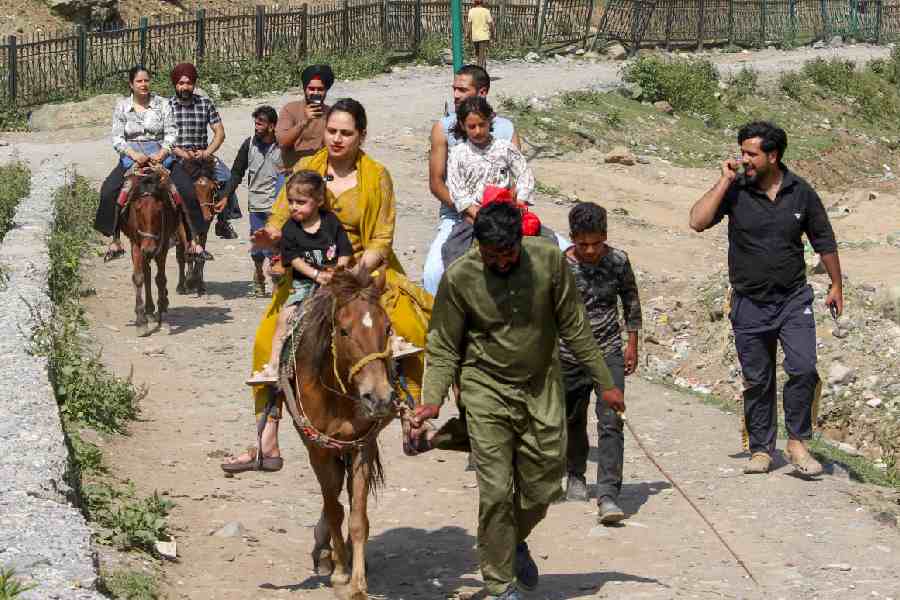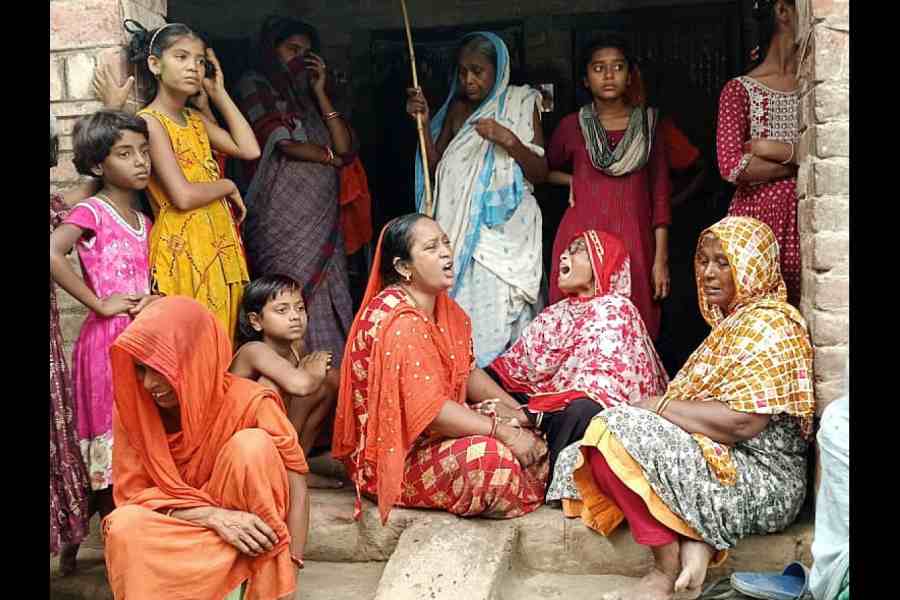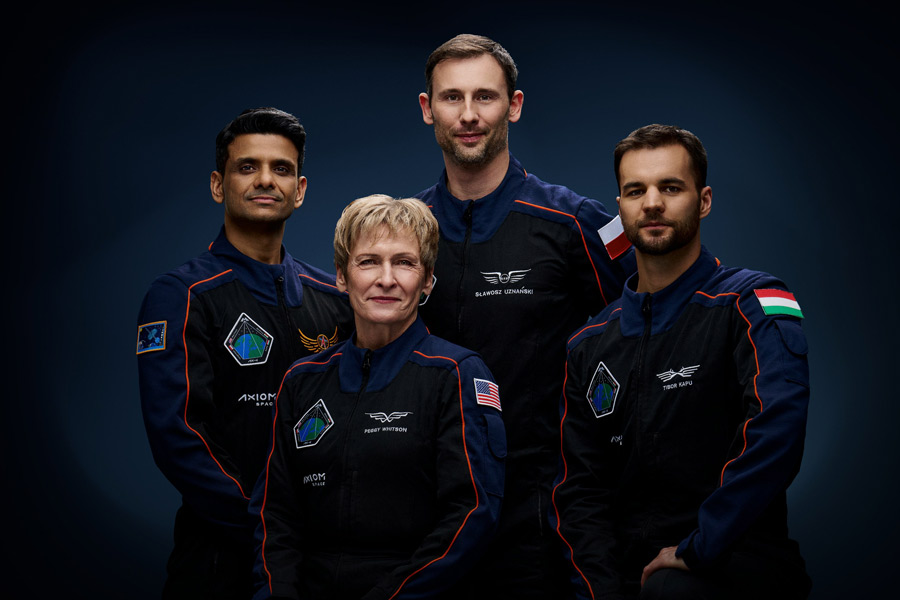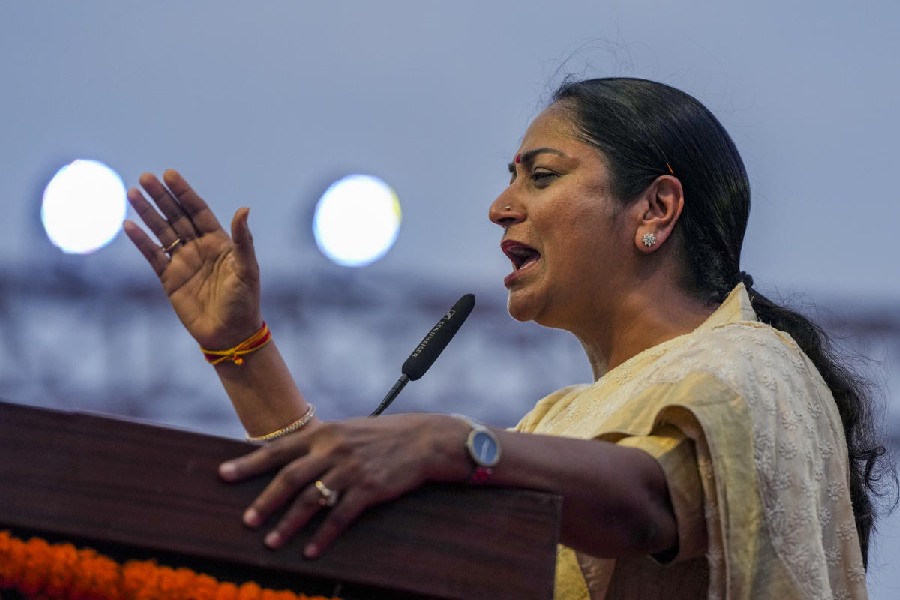The year 2006 was a pedestrian year for Indian tennis. Two Grand Slam titles, Bhupathi’s victory in the mixed doubles at the Australian Open. Paes’ victory in the US Open men’s doubles kept the Indian flag flying at the highest levels of the game. Sania Mirza slumped in the rankings from 32 to 67 but contributed in larger measure to our international image. Driven by media hype and her sparkling personality, she kept going with the inertia of her giant-killing exploits of 2005. Two golds and a silver medal in the Asian Games in Doha brought much needed cheer to the huge contingent at the Games. That sums up the bright side of Indian tennis in 2006.
In the Davis Cup, despite playing at home on grass courts against Pakistan in the Asia Oceania Group I Zone we were on the verge of defeat. If Paes, suffering from cramp and exhaustion, had not managed with Herculian effort to dig in and outfight Qureshi, we would have been relegated to Group II — a humiliating thought.
Our younger players who are members of the Davis Cup team have not managed to break through to the top 200, let alone the 100. Rohan Bopanna, ranked 281, is followed by Harsh Mankad at 319, Prakash Amritraj at 393 and Karan Rastogi 497. Time is running out for them. They are all stranded with many others round the globe fighting hard to break through to the top 100.
Frankly speaking, except for Karan Rastogi who is only 20 years of age, it may already be too late for the others to break through. Defeat in our Davis Cup match against Uzbekistan, which is not unlikely, to be played at Namangan, Uzbekistan, on February 9, 10, and 11 this year, will result in relegation to Group II of the Asia Oceania Zone — the bottom of the Davis Cup heap! There is little doubt that other Asian countries such as China, Korea, Japan, Thailand, Taipei have left India far behind.
Leander Paes, Mahesh Bhupathi and Sania Mirza are the three pillars of Indian tennis. They are like generals at the front without an army. Paes, who one thought was in the twilight of his career after being 18 years in the circuit, retains an extraordinary incandescence. He stands alone, like Horatio at the bridge. Bhupathi has shown rare entrepreneurial ability and will find it difficult to maintain his focus and continue to play successfully at Grand Slam levels. His promotional activities are bound to affect his game.
Sania is young and yet to achieve her full potential and it is by no means optimistic to expect her to continue her high profile presence internationally for the next 6-7 years. She seems sure of having a good 2007. Luck in the Grand Slam draws will play a major role in her success. Last year, she was drawn in the first round against Myskina in the French Open and Dementieva at Wimbledon, both top-ten players. A couple of good victories over women in the top 10-15 could send her confidence soaring higher and establish her much closer to top ten levels.
It is paramount for Sania to keep on improving her physical fitness and stay free of injury, so that when the chance comes, as it surely will, she can strike with full force. None of the top 10 in women’s tennis is free from injury.
With the sole exception of Karan Rastogi, there is little chance of any back-up emerging from the ranks in the next few years.
Jeev Milkha Singh’s break through to the top echelons of international golf, a saga of resolve, perseverance and dedication, should inspire our youngsters and sports persons all over India. It should be put in the text books and replace the story of Robert Bruce and the Spider.
Amongst the men, an all-out effort should be made to groom and give Rastogi every assistance. His facile victory in the first round of the Chennai Open over a player ranked 104 and subsequent match against Nadal in the second round confirmed his promise and talent.
To make a break-through, Rastogi needs much greater physical strength and stamina. Physical strength could give him much-needed 10/15 k.p.h. on his service, ability to last out the punishing long baseline rallies, and more control on his shots.
Years ago, when I saw Agassi at Wimbledon after a year’s gap, he had managed by physical training to put on 12/14 lbs of muscle on his body in one year. Rastogi can certainly achieve this with a specialised trainer. It is so very sad to see Karan and his father, spending their time looking in vain for sponsors. As Nadal said, the only way to the top is to grind your way through the Future and Challenger tournaments. This costs big money according to Indian standards — 150000 dollars a year for approximately three years. But Karan’s requirements are comparatively frugal. He has reached a stage where a mere 10,0000 dollars for a couple of years could send him within striking distance of the top 100. In foreign countries this amount can be considered as loose change.
Over the years the Chennai Open, thanks to a handful of amiable tennis loving industrialists, has excelled in organisation and promotion of what is now considered one of the best-run tournaments in the ATP circuit. In the process, they must have spent in my estimate more than 100 crores. Now, all they need to do is for one of the tycoons to pick up the phone and make a couple of calls to fund Karan Rastogi. It will give Indian tennis a much needed shot in the arm.










